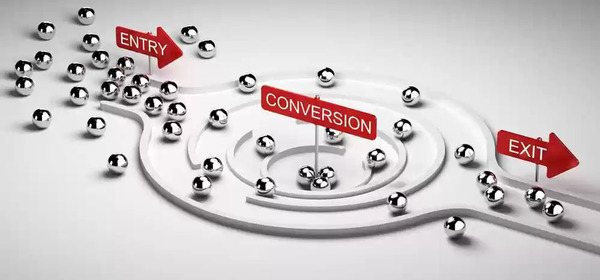As we discussed in the first article in this series, customer journeys have become increasingly complex. This can make it challenging for brands to know precisely how customers interact with their organizations before they decide to make a purchase. The models we already discussed dealt with single-touch attributions - the model only attributed the income and ROI generated from a new customer to a single point on the buyer’s cycle. With customers hitting so many touch points before making a purchase, however, the inefficiency of these systems versus a multi-touch attribution model is clear.
Knowing which multi-touch attribution models bring in the best quality leads, as we learn from the first-touch attribution model, is helpful. Similarly, knowing the end-of-funnel strategies that encourage those conversions will help, but you will still not get the full picture. You don't know where people were nurtured and what convinced them to end up engaging them with the brand in the first place. You will not give enough credit to the top-of-funnel activities.
Multi-touch attribution models can help brands to better document the entire customer journey. They are designed to better articulate how customers found the brand, moved through the customer journey, and ended up making a purchase. Multi-touch attribution models are designed to document which type of touches customers interacted with throughout the organization as they moved closer to conversion.
Keep in mind that no attribution model will be perfect, including multi-touch attribution, and that they instead focus on providing an average value of how the different types of marketing strategies perform. To help you make the best decision for your group, here are a few of the most popular multi-touch attribution models that you can adopt for your organization.
Linear attribution
A linear attribution model is one type of multi-touch attribution model that divides the credit for a particular conversion evenly across all of the customer’s touch points. If a customer found a brand through organic search and signed up for an email list, followed an email link to engage again, clicked on PPC when product searching and then made a purchase, the organic search, email marketing, and PPC would all receive an equal division of revenue from the conversion that resulted from this lead.
This model can benefit many brands because they will find it easier to understand all the checkpoints that should receive credit for finding and nurturing the lead. This will help them develop strategies moving forward.

Contrary to multi-touch attribution, this model does fall short in its ability to clearly demonstrate which strategies and promotions had more of an impact than others. For example, if your email campaign does little to generate conversions but does get clicked on by existing leads, then it will receive the same amount of credit as another strategy that had better success persuading leads to make a purchase. When used in conjunction with first- or last-touch attribution models, however, brands will come away with a good idea of their customer journeys and the strategies that give them the most success.
Time-decay Attribution
A time decay attribution model attempts to make up for the shortcomings of the linear attribution model by assigning increasing value to each touch point as the customer moves through the journey. In other words, the first touch will receive the least, a PPC ad that brings them back to the site gets little more, an email campaign that brings them back again a little more, and a white paper download that directly precedes their conversion receives the most.
This multi-touch attribution model does give credit to all the touch points in the buyer's journey, but it can minimize the top-of-funnel efforts. Similar to the last-touch attribution model, it can make it hard for organizations to properly understand how well their awareness efforts to bring in new prospects perform.
Since it does assign increasing credit to all of the touch points, however, it can be a great way to understand how well your bottom-of-the-funnel nurturing performs. You will clearly see what brings customers on the verge of converting to the tipping point and how they interact with the site through the final touch points before a conversion. This can help you refine your ability to nurture customers through these last stages.
U-Shaped Attribution
The U-shaped attribution model understands that the first and last touch points on the buyer’s journey hold particular significance. One introduced the prospect to the brand and started to show them how your company can meet their pain points. The last touch point lets brands see what finally convinced the prospect to convert.
This model also takes into account the importance of the funnel as a whole, noting the importance for organizations to understand how prospects interact with the site and brand throughout their buyer’s journey.

To accomplish this, the U-shaped model assigns 40% of the credit to the first and last touches and divides the remaining 20% among the touch points in between. This does give brands a more balanced idea of how their customers interact with the organization and how well the top and bottom of their funnel performs. Of course, brands can also customize this, or any, model if they find it does not best represent their objectives. For example, you can decrease the credit given to the first and last touch credit in the U-shaped model and offer more credit to the touches in the middle if you really want to measure your funnel performance.
How Do I Know Which Attribution Model to Use?
There is no clear right or wrong answer when it comes to using attribution models. Brands need to think carefully about what they want to measure, such as the strength of their awareness efforts or the power of their brand. They also need to think about how their typical customer progresses through their buyer’s journey. An organization with a quick buyer’s journey may perform better with a one-touch attribution model, while one with a longer process and a greater importance placed on the touch points in between will need a multi-touch attribution model to best understand their customers. Consider how these different methods and their measurements align with your objectives when making a selection.
Measuring attribution plays a critical role in how you will plan your future marketing strategies and present your ROI to decision makers. Understanding the benefits and drawbacks of multi-touch attribution and the other models covered in these last two posts will help you make the selection that fits your business best.


